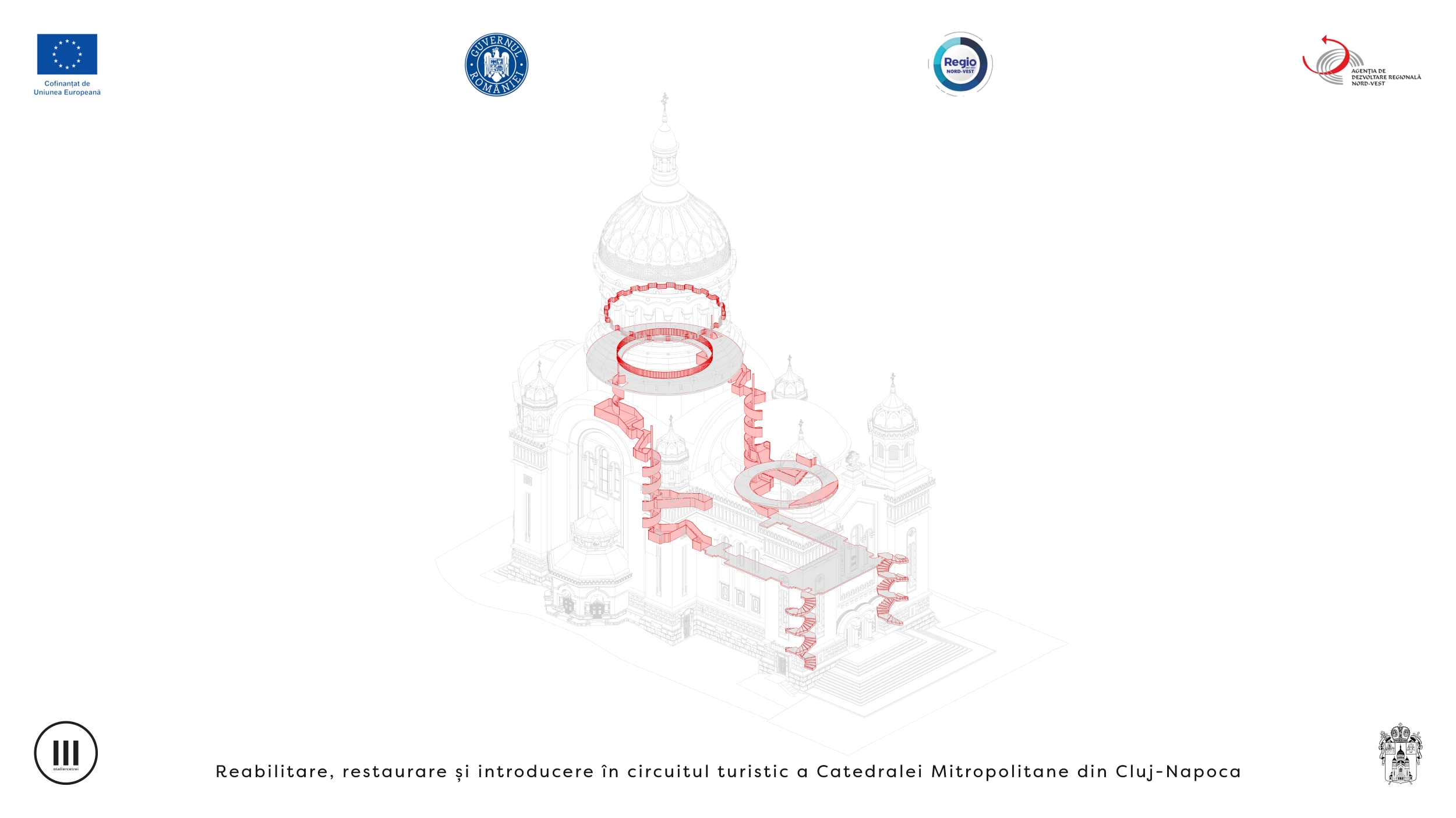The construction of the Metropolitan Cathedral of Cluj-Napoca, bearing the patronage of the 'Assumption of the Virgin Mary', began in 1923, largely due to the efforts of Bishop Nicolae Ivan. Built according to the project of the architects Constantin Pomponiu and Georges Cristinel, the Cathedral is registered in the List of Monuments and Historical Sites of Cluj County with LMI code: CJ-II-mB-07354.
The importance of this edifice - and those similar to it - is captured by Prof.dr.arch. Augustin Ioan (2018) in the following: 'The church of the majority of the population is therefore seen as the national church (with the Greek-Catholic church second in rank) and, therefore, as an engine of the propagation of the national idea, intended to unify and homogenize the asperities of the state national. The implementation of the great cathedrals of the Romanian Orthodox in Transylvania was therefore an explicit gesture of power. Practically, only the fourth and fifth decades are the ones that start to raise, from a conceptual point of view, the problem of expressiveness - necessarily 'national' - of sacred architecture, especially of monumental scale, of cathedrals, […] '
The project "Rehabilitation, restoration and introduction to the tourist circuit of the Metropolitan Cathedral of Cluj-Napoca", developed by the Cluj office of ateliercetrei, proposes the definition of a holistic strategy for the restoration, rehabilitation and maintenance of the historical monument - aiming to bring the cathedral to a situation that no longer requires modifying interventions, as well as its introduction into the tourist circuit. In this sense, it is proposed to transform the double gallery on colonnades – the main characteristic element of the dome with the lantern, the dominant element of the cathedral – into spaces accessible to the general public. The digitization process of the monument (laser scanning and information modeling in three dimensions) revealed a set of secondary spaces - hidden from the viewer - located between the interior and exterior walls of the cathedral. These spaces will host the visiting route - consisting of a set of stairs and platforms - which will facilitate the visit of the double gallery on the columns and implicitly the unusual approach to the dome over the nave that marks the connection between heaven and earth - the all-encompassing universe - through the keystone who is Jesus Pantocrator. In addition, the outdoor gallery will offer a unique panoramic view of the city and its surroundings.



